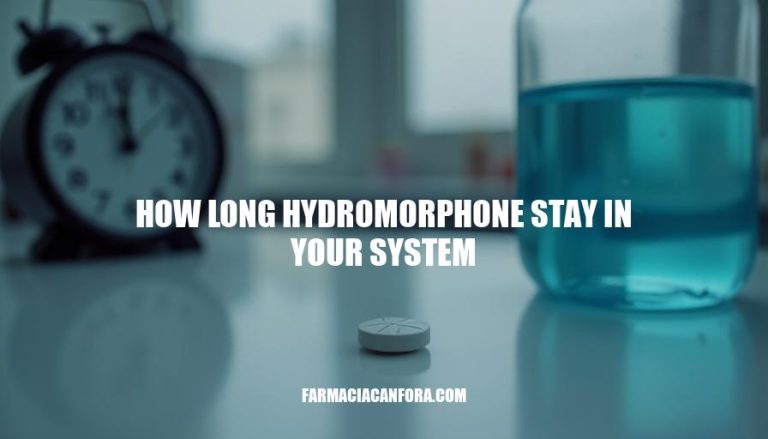


Hydromorphone, also known by the brand name Dilaudid, is a powerful opioid medication used to manage moderate to severe pain. It is significantly more potent than morphine and can be administered orally or via injection. Understanding how long hydromorphone stays in your system is crucial for several reasons: it helps in managing pain effectively, avoiding potential overdose, and ensuring safe use, especially given its high risk of addiction and respiratory depression.
Here are the factors that influence how long hydromorphone stays in your system:
Here are the detection times for hydromorphone in various drug tests:
The concept of half-life refers to the time it takes for the concentration of a drug in the bloodstream to reduce by half. This is a crucial measure in pharmacology as it helps determine the dosing schedule and duration of a drug’s effects.
For hydromorphone, the half-life varies depending on the formulation:
This means that for immediate-release hydromorphone, it takes about 2 to 3 hours for the drug concentration to drop by half in your system. For extended-release formulations, this period extends to 8 to 15 hours. Consequently, the drug’s effects will last longer with extended-release formulations, and it will stay in your system for a more extended period compared to the immediate-release form.
Hydromorphone, a powerful opioid medication, has a significant impact on the body and its effects can last from several hours to several days.
The factors that influence how long hydromorphone stays in your system include dosage, frequency of use, metabolism, age, weight, and overall health. Understanding these factors is crucial for managing pain effectively, avoiding potential overdose, and ensuring safe use.
Detection times for hydromorphone vary depending on the type of drug test, with urine tests detecting it for 1 to 3 days, blood tests for up to 24 hours, saliva tests for up to 36 hours, and hair tests showing use from the past 3 months.
The half-life of hydromorphone also varies depending on the formulation, ranging from 2 to 15 hours. Knowing how long hydromorphone stays in your system is essential for medical, legal, and personal reasons, as it can impact pain management, addiction risk, and respiratory depression.